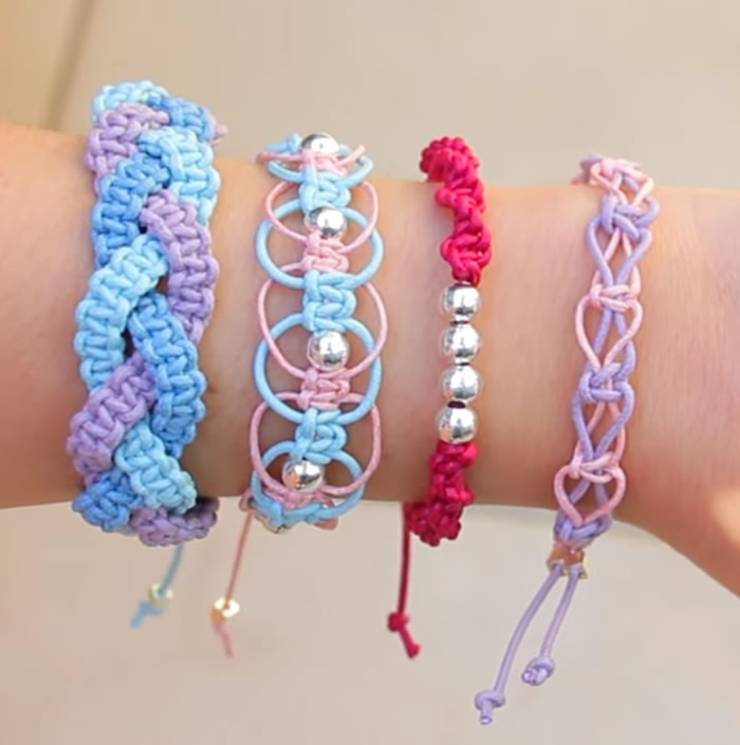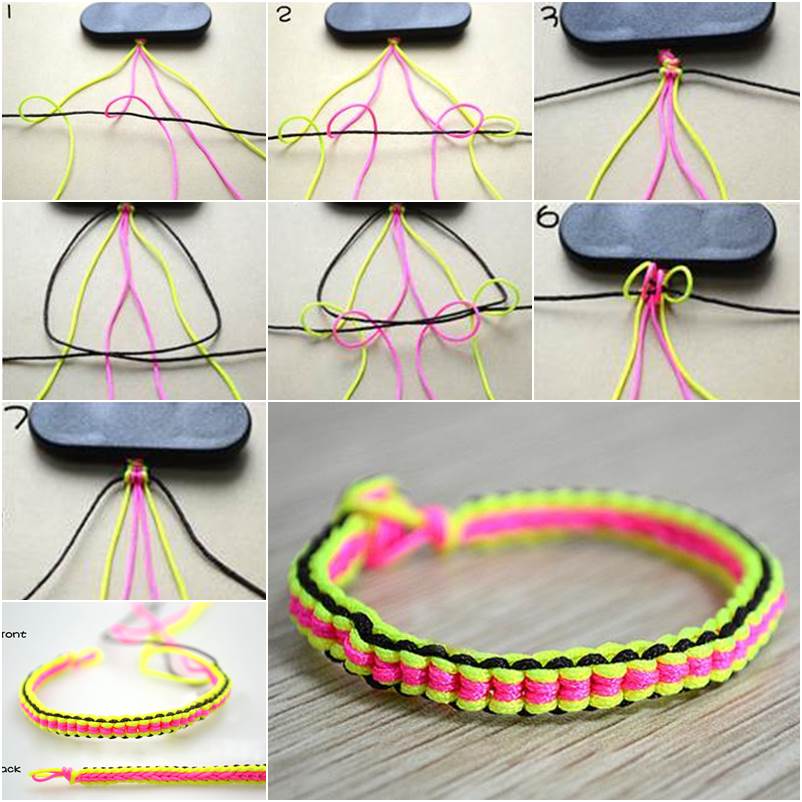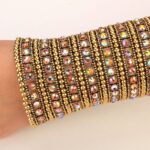In our increasingly digital world, crafting tangible objects with our own hands holds a unique appeal. Making bracelets with string is more than just a pastime; it’s a journey into creativity, a chance to personalize style, and a connection to a rich history of artistry. From simple friendship bracelets to intricate, layered designs, string bracelets offer endless possibilities for self-expression. This rise in popularity is fueled by the growing desire for unique, personalized accessories that reflect individual tastes. Beyond aesthetics, the act of crafting provides a meditative and therapeutic experience. Furthermore, the adaptability of string allows for a wide range of materials, colors, and textures, fostering a creative outlet for individuals of all ages and skill levels. Learning how to make bracelets with string is not just about acquiring a new skill, but embracing the joy of creating something beautiful and meaningful.
Whether you’re seeking a fun activity for a rainy afternoon, a way to express your creativity, or a unique gift-giving idea, this comprehensive guide will equip you with the knowledge and techniques to create stunning string bracelets. We’ll explore diverse styles, from simple knots to intricate patterns, and provide practical tips for creating bracelets that are both beautiful and durable.

Understanding the Basics of String Bracelet Making
Different Types of String
The type of string you choose significantly impacts the look and feel of your bracelet. Cotton is a popular choice for its softness and affordability, ideal for beginners. Polyester is a durable alternative, suitable for bracelets that will see a lot of wear. Paracord, known for its strength and versatility, is a great option for more robust designs. Consider the intended use and desired aesthetic when selecting your string.
String Properties and Considerations
Factors like thickness, texture, and color can greatly influence the bracelet’s appearance. Thick string can create a bolder statement, while thin string is perfect for intricate patterns. Think about how the string will feel against your skin and how the color will complement your style.
Essential Tools and Materials
Besides string, you’ll need a few basic tools. A pair of scissors for precise cuts, a ruler (optional) for even spacing, and a needle (if required by the chosen technique) are all you need to get started.
Exploring Different Knotting Techniques
The core of bracelet making lies in the knotting techniques you employ. Simple knots like the square knot and overhand knot are the building blocks for many designs. More complex knots, like the adjustable knot or fishbone knot, add depth and sophistication to your creations.
Mastering Basic Knotting Techniques
The Square Knot
A fundamental knot, the square knot is essential for securing string and creating a stable foundation for more complex designs. It’s used extensively in many different bracelet styles. The key is ensuring the knots are tight and evenly spaced for a clean look.
Step-by-Step Instructions
- Lay the two strings side-by-side.
- Cross one string over the other.
- Bring the end of the crossed string under the other string.
- Bring the end of the other string over the crossed string.
- Pull tight to secure the knot.
The Overhand Knot
This basic knot is perfect for creating simple, elegant bracelets. It’s a cornerstone of many design elements, providing a strong and straightforward connection.
Variations and Applications
- Single Overhand Knot: Useful for creating simple closures or joining strings.
- Double Overhand Knot: Creates a stronger knot for more challenging designs.
Advanced Bracelet Designs
Braided Bracelets
Braiding techniques add a touch of elegance and texture to your string bracelets. There are numerous braid patterns, each with its own unique aesthetic. Experiment with different numbers of strands and string colors.
Creating Intricate Braid Patterns
Different braid patterns offer unique visual effects. Experiment with different braid types and string combinations to find your preferred aesthetic. This can range from simple three-strand braids to complex multi-strand designs.
Personalization and Design Inspiration
Customizing Your Bracelets
The beauty of string bracelets lies in their adaptability. Experiment with different colors, string types, and patterns to create truly unique pieces that reflect your personal style. Embellishments like beads, charms, or even small crystals can further enhance the design.
Inspiration from Nature and Culture
Seek inspiration from nature’s patterns, cultural designs, or even abstract art. This can guide you to develop innovative and creative bracelet designs.
Troubleshooting and Common Challenges
Knotting Errors
Learning from your mistakes is key to improvement. If you encounter problems with knots, review the instructions and practice the technique until you master it. Tight knots and even spacing are critical for a professional look.
String Slippage
String slippage can occur if knots aren’t tight enough or if the string isn’t suitable for the design. Choose appropriate string types and ensure meticulous knotting to prevent this.
Summary
This guide has explored the diverse world of string bracelet making. We’ve delved into the fundamentals of selecting appropriate string types, mastering essential knotting techniques, and exploring advanced bracelet designs. From basic knots to intricate braids, you now possess the knowledge to create unique and personalized accessories. Remember to practice, experiment, and most importantly, enjoy the creative process.
Key takeaways include choosing the right string, understanding various knotting techniques, and embracing design variations to personalize your creations.
Frequently Asked Questions (FAQs)
What kind of string is best for beginners?
For beginners, cotton string is a great option due to its softness, affordability, and ease of use. It’s readily available in various colors and thicknesses, making it perfect for experimenting with different designs.
How can I make my bracelets more durable?
Using stronger string like paracord or polyester, and ensuring tight knots are essential for durability. Avoid overly loose knots, as they can easily come undone. Choose materials appropriate for the intended wear and tear.
What are some tips for preventing string slippage?
Tight knots are paramount. Ensuring that each knot is firmly secured will significantly reduce the risk of slippage. Also, select string that is appropriate for the type of design you are creating. Heavier weight string tends to prevent slippage more effectively.
How do I create a patterned bracelet?
Patterned bracelets can be created using various techniques, such as alternating colors of string, incorporating different knotting patterns, or adding beads or charms in a specific arrangement. Experiment with different color combinations and knotting styles to achieve the desired pattern.
Where can I find inspiration for bracelet designs?
Inspiration can be drawn from various sources, including nature (leaf patterns, flower designs), culture (traditional motifs), or even abstract art. Online searches, social media platforms, and browsing craft communities can also provide a wealth of ideas.



